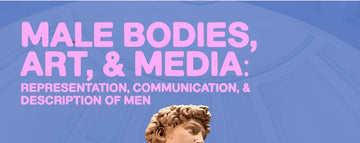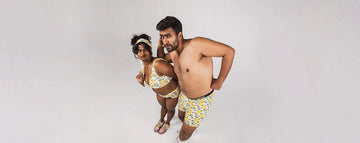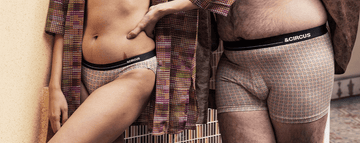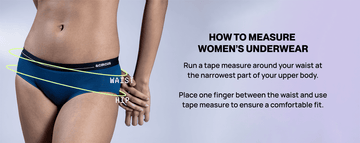From ancient sculptures to A.I. generated art, men and their bodies have been the focus of artistic expression, sexuality, and fashion alternating between objects of power and awe, to fluidity and romance. These representations shape societal perceptions and impact our understanding of masculinity, self-image, and gender dynamics.
As the conversation around body positivity gains momentum, an integral part of this movement addresses the description of male bodies in art, film, and media. While there has been extensive research and debate surrounding the portrayal of women, the same level of attention is only recently being directed towards men. We are going to shed some light on how men have been depicted, how these depictions provide subtext for ideas on masculinity, and how men and women perceive and describe men differently.
Men in Art: The Historical Lens
Historically, the male body in art has represented strength and power. From the muscular depictions in ancient Greek sculptures like ‘Hercules’ & 'Discobolus' to Michelangelo's 'David', men have been portrayed as embodiments of physical athleticism and hero-saviour personas.
Statistically, a study by the Journal of Cultural Analytics found that about 58% of male figures in Western art created between the 16th and 20th centuries are depicted as either athletes, heroes, or warriors. In contrast, in 19th-century aristocratic art, the focus was shifted to money. Class or status has been the determining factor in defining male virtues. The epitome of a handsome man has generally been an idealised version of an upper-class individual; an archetype that has changed over time.
A study by the National Museum of Women in the Arts found that 87% of artworks in major museums were created by male artists, highlighting the need for diverse perspectives on the male body.
However, some contemporary artists have challenged these norms, using their art to portray men in a more diverse and complex light, like Kehinde Wiley, known for his vibrant, large-scale paintings of African American men, which challenge the norms of classical portraiture. With empathy and nuance, they capture vulnerability, emotions, and various expressions of masculinity, breaking away from the rigid boundaries set by past depictions.
Men in Cinema: The Modern Perspective
In recent years, the representation of men in media has evolved yet remained anchored within the scope of certain stereotypes. Action heroes with chiselled physiques, brooding romantic leads, and comedic portrayals of hypermasculinity have long been familiar tropes. Action movies, advertisements, and video games often portray male characters as muscular, brave, and emotionally resilient, subtly suggesting that these traits are the hallmark of masculinity and propagating narrow ideas of what it means to be a man.
Nonetheless, recent years have shifted towards more realistic and inclusive representations. In ’Barfi’ Ranbir Kapoor plays a deaf and mute lead defying the idea of male leads as physically perfect and powerful, with his strengths lying instead in his positivity, resilience, and capacity to love, redefining the idea of heroism.
Fawad Khan in Kapoor and Sons plays a homosexual man not subject to the usualy violent and ignorant portrayal of alternate sexualities in Bollywood, usually as a vehicle for comedy. Ayushman Khurrana has taken on everything from ED to baldness, ultimate taboos for men - in fact, the two most significant areas of male insecurities.
According to a 2021 study by the Geena Davis Institute on Gender in Media, 86% of the leading male characters in the top-grossing films were depicted as physically aggressive, reinforcing traditional masculine archetypes.
Men in Market: Typed Advertising
Advertisements wield immense power in shaping cultural attitudes and ideals. The male body is often presented as a commodity objectified for commercial gain. The media frequently perpetuates that the ideal man must possess an impeccably sculpted physique or specific skin colour to promote grooming products & fitness supplements.
However, the growing body positivity movement has also begun challenging these notions. Brands are embracing diverse body types and redefining masculinity by portraying men as multifaceted individuals rather than objects of desire.
According to a study by the American Psychological Association, exposure to muscular male ideals in advertising can lead to body dissatisfaction and disordered eating behaviours in men, highlighting the negative impact of unrealistic representations.
The Hidden Messages and Values

The portrayals of men carry significant implications. The constant representation of men as physically perfect and emotionally impervious communicates an unrealistic standard that many men feel compelled to achieve. It subtly perpetuates that masculinity is intrinsically tied to physical strength and emotional stoicism. A Men's Health Forum study found that 63% of men felt negatively influenced by such portrayals, causing stress, anxiety, and even body image issues.
The Difference of Perception: Men vs Women
Interestingly, how men and women describe men also offers some insights. A survey conducted by the University of Sheffield revealed that while men often tell other men about their physical attributes (strong, tall, muscular), women tend to describe men in terms of their personality traits (kind, funny, caring). This indicates a disconnect between how men perceive themselves and how they are perceived by the opposite gender, further exacerbating the pressure to conform to media-induced standards.
Rethinking Representation: A Need for Balance

The way forward is to push for a more balanced & actual representation of men in art, media, and film. More realistic and diverse depictions of the male body and personality can play a crucial role in breaking down harmful stereotypes and promoting healthier self-perceptions among men. A positive trend is emerging, though. The ‘Dove Men+Care’ campaign successfully challenged the conventional representation of men by emphasising their roles as caregivers; they expect men to feel more optimistic about their body image after exposure to such balanced portrayals.
The Power of Representation
The portrayal of men in art, film, and media goes beyond aesthetics—it's a powerful force shaping societal values and self-perception. While traditional depictions have reinforced narrow ideals, a shift is underway. More nuanced and diverse representations are breaking stereotypes, fostering inclusivity, and redefining masculinity. By discussing men with greater empathy and awareness, we can create a more positive, inclusive narrative around the male body and identity.





















